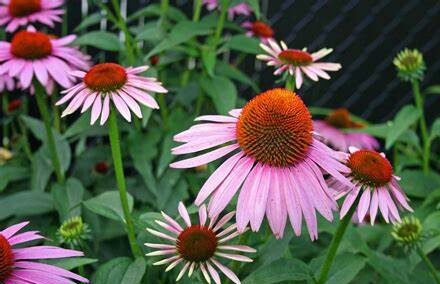Native Plants for Sustainable Gardens – Creating a sustainable garden not only beautifies your landscape but also supports local ecosystems, conserves water, and reduces the need for chemical inputs. By choosing native plants for sustainable gardens, you can create a thriving, low-maintenance space that benefits both the environment and your lifestyle. This guide will explore some of the best native plants, their benefits, and how to incorporate them into your sustainable garden design.
Table of Contents
ToggleWhy Choose Native Plants for Your Garden?
Environmental Benefits of Native Plants
Native plants have evolved in specific regions over thousands of years, making them well-adapted to local climates, soil conditions, and wildlife. They offer several key benefits for sustainable gardening:
- Conserve water: Native plants typically require less watering since they are suited to the regional rainfall.
- Support biodiversity: Native plants attract and provide habitat for local pollinators, such as bees, butterflies, and birds.
- Reduce chemical needs: Being naturally adapted, native plants often require fewer fertilizers or pesticides, reducing your garden’s environmental impact.
By using native plants for sustainable gardens, you can enjoy a thriving, eco-friendly space that requires less upkeep and supports local biodiversity.
Top Native Plants for Sustainable Gardens in Different Regions
Eastern United States: Purple Coneflower (Echinacea purpurea)
Why Purple Coneflower is Ideal for Sustainable Gardens
The Purple Coneflower is a popular native plant in the eastern United States, known for its drought tolerance and attractive, daisy-like flowers. This hardy perennial provides food and habitat for pollinators and is resistant to pests, making it a low-maintenance addition to sustainable gardens.
Basic Care for Purple Coneflower
- Light: Prefers full sun.
- Watering: Minimal; water only during extended dry periods.
- Maintenance: Deadhead spent blooms to extend flowering.
Western United States: California Poppy (Eschscholzia californica)
Features of California Poppy in Dry, Sunny Climates
The California Poppy is a drought-resistant, native wildflower that adds a vibrant splash of orange to gardens. As the state flower of California, this plant is well-suited to dry, sunny areas and requires very little care. Its taproot system helps it survive in nutrient-poor soils and supports soil stability, making it an eco-friendly choice.
Basic Care for California Poppy
- Light: Requires full sun.
- Watering: Extremely low; ideal for xeriscaping.
- Maintenance: None; let seeds self-sow for continuous growth.
Midwest United States: Black-Eyed Susan (Rudbeckia hirta)
Benefits of Black-Eyed Susan in Sustainable Gardens
The Black-Eyed Susan is a resilient native plant that can handle both drought and harsh winters. Its bright yellow flowers attract pollinators like bees and butterflies. Black-eyed Susans also reseed naturally, making them an easy, low-maintenance choice for gardeners.
Basic Care for Black-Eyed Susan
- Light: Full sun to partial shade.
- Watering: Minimal; tolerates occasional dry spells.
- Maintenance: Cut back in late fall to encourage new growth in spring.
Southwest United States: Desert Marigold (Baileya multiradiata)
Advantages of Desert Marigold for Arid Landscapes
Desert Marigold is an excellent choice for sustainable gardens in arid climates. Its silver foliage reflects sunlight, helping it retain moisture, and its bright yellow blooms add color to xeriscapes. This plant is also deer-resistant and can survive on minimal water, making it perfect for eco-friendly landscaping.
Basic Care for Desert Marigold
- Light: Full sun.
- Watering: Minimal; ideal for low-water gardens.
- Maintenance: None required, as it thrives in poor, dry soils.
| Region | Native Plant | Light Requirement | Water Needs | Maintenance |
|---|---|---|---|---|
| Eastern US | Purple Coneflower | Full sun | Low | Deadhead blooms |
| Western US | California Poppy | Full sun | Very low | Self-sowing |
| Midwest US | Black-Eyed Susan | Full to partial | Minimal | Cut back in fall |
| Southwest US | Desert Marigold | Full sun | Minimal | None required |
Benefits of Using Native Plants for Soil Health and Conservation
How Native Plants Help Improve Soil Quality
Many native plants have deep root systems that help prevent soil erosion and improve soil structure. For example, prairie grasses like Little Bluestem and Switchgrass are native to the Midwest and have roots that penetrate deep into the soil, helping retain water and nutrients. This benefits not only your garden but also supports larger ecosystems.
Water Conservation with Native Plants
One of the most significant environmental benefits of native plants is their ability to conserve water. Many native species are adapted to regional rainfall patterns and thus require less irrigation than non-native plants. Xeriscaping with natives like California Poppy and Desert Marigold can dramatically reduce water consumption in dry regions.
Designing a Sustainable Garden with Native Plants
Selecting Plants Based on Climate and Soil Type
When planning a sustainable garden, it’s essential to choose plants that are native to your area and compatible with your garden’s specific conditions, such as soil type and climate. Many state agricultural or environmental agencies offer lists of local native plants to help guide your selection.
Grouping Plants with Similar Needs
To simplify maintenance, consider grouping plants with similar water and sunlight requirements together. This way, you can more efficiently manage irrigation and care, making the garden more sustainable and cohesive.
Additional Resources for Native Plant Gardening
To learn more about native plants and sustainable gardening, check out Audubon Society’s Native Plant Database, which allows you to search for plants based on your zip code, ensuring that your selections are regionally appropriate.
Conclusion
Choosing native plants for sustainable gardens is an excellent way to create an eco-friendly landscape that benefits both you and the environment. By selecting plants that are naturally suited to your region, you can reduce water use, improve soil health, and attract local wildlife, all while enjoying a beautiful, low-maintenance garden. Whether you’re planting Purple Coneflowers in the east or Desert Marigolds in the southwest, native plants offer a resilient, sustainable option for every garden type.




